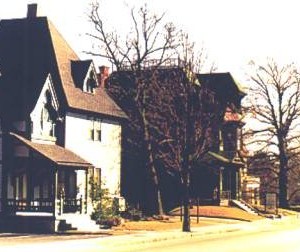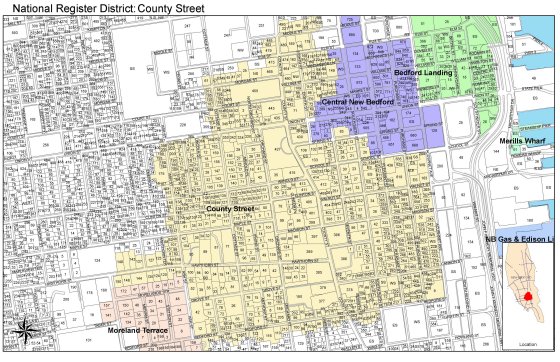 County Street National Register Historic District
County Street National Register Historic District
The County Street National Register Historic District is comprised of approximately 1,000 properties and 100 acres of land. The district is significant as an area where the development of architecture in New England from 1780-1890 can be traced according to logical development patterns. The district is also significant for its relationship to the prosperous merchants and whalers who were influential in the growth of Massachusetts during the first half of the 19th century.
The growth and evolution of the existing district occurred in three major phases corresponding geographically to the areas east of County Street, along County Street, and west of County Street. The simple, unadorned architecture east of County Street reflects the beliefs of late 18th century Quaker merchants and ship-builders, whose wealth was demonstrated in the quality and size of their residences. By the mid-19th century, New Bedford had become a prosperous port and the architecture along County Street became imposing with grand mansions of varying architectural styles. The area west of County Street expanded with the need for further residential land development during the mid-19th century. Wealthy Quaker merchants built fashionable architecture on land in this vicinity. The area east of County Street changed in the later 19th century with the rise of textile mills in New bedford. This area grew and incorporated mill housing into its fabric, alongside the earlier later 28th century architecture.
A variety of architectural styles can be seen throughout the district. These styles range from 18th century Georgian and Federal homes to many examples of the 19th century styles of Greek Revival, Italianate, Gothic Revival, Second Empire, Stick Style and Queen Anne. In addition, there is an abundance of transitional architecture and Colonial Revival buildings of the late 19th century.








